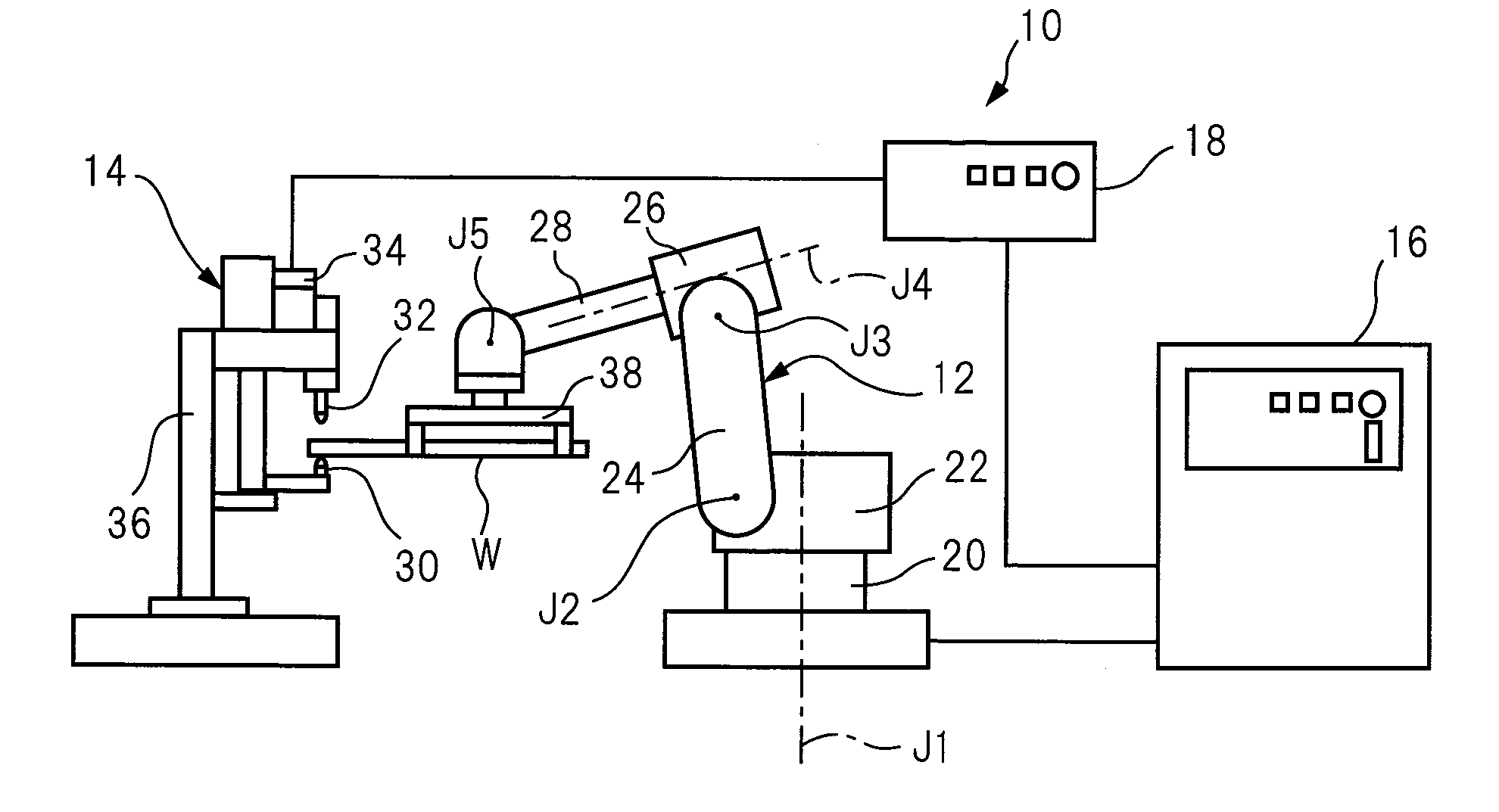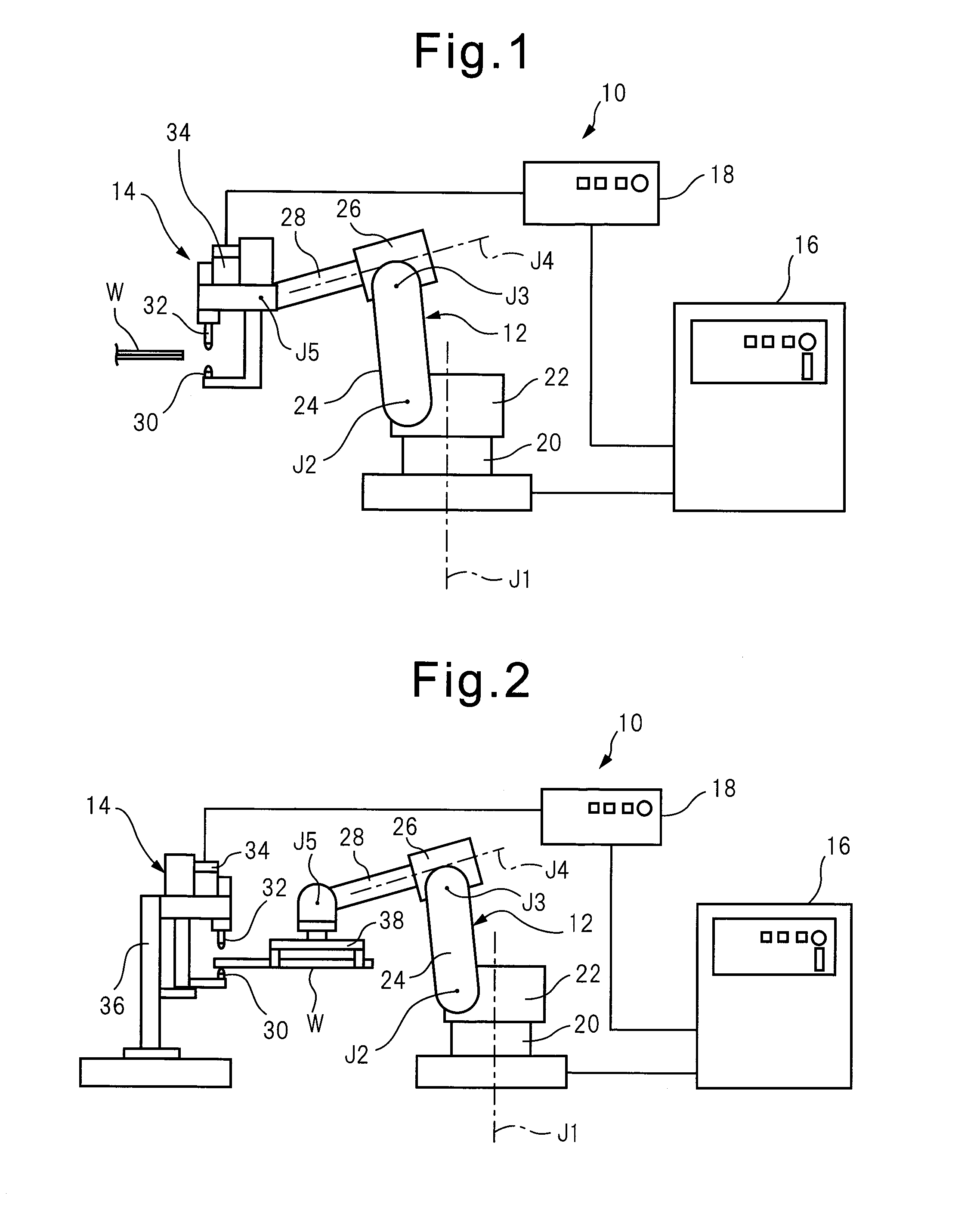Method of detection of welding workpiece position using movable electrode
a technology of welding workpiece position and movable electrode, which is applied in the direction of auxiliary welding devices, soldering devices, instruments, etc., can solve the problems of inability to accurately detect contact, inability to detect the surface position of the welding workpiece at the movable electrode side and the surface position at the strike position also becoming uncertain, and the current or torque of the servo motor ending up exceeding a threshold value. , to achieve the effect of simplifying the work procedure for workers
- Summary
- Abstract
- Description
- Claims
- Application Information
AI Technical Summary
Benefits of technology
Problems solved by technology
Method used
Image
Examples
embodiment a1
[0123]Referring to FIG. 6, an A1-th embodiment of a method of detection of the welding workpiece position of the present invention will be explained. In the A1-th embodiment, in the spot welding system10 shown in FIG. 1, the speed Vg by which the servo motor 34 drives the movable electrode 30 is made “0” and the movable electrode 30 is made stationary with respect to the counter electrode 32. In that state, the multiarticulated robot 12 is used to hold the spot welding gun 14 and make it move relative to the welding workpiece W fixed to the workpiece table (not shown) by a speed Vr. Further, the servo motor 34 for driving the movable electrode 30 is set with a torque limit, so the torque will never increase over a certain value. To suppress deformation of the welding workpiece W due to pressing by the movable electrode 30, the torque limit is preferably set to as low a value as possible.
[0124]In this embodiment, first, the welding workpiece W is made to move between the movable elec...
embodiment a2
[0138]In the A2-th embodiment, in the spot welding system 10 shown in FIG. 1, the speed Vg by which the servo motor 34 drives the movable electrode 30 is not 0, the servo motor 34 is used to make the movable electrode 30 move, and, while doing so, the multiarticulated robot 12 is used to hold the spot welding gun 14 and make it move relative to a welding workpiece W fixed to the workpiece table (not shown) at a speed Vr. In this point, this differs from the A1-th embodiment. The rest of the points are similar to the A1-th embodiment. Therefore, here, the different parts will basically be explained and explanations of similar parts will be omitted.
[0139]In the A1-th embodiment, the speed Vg by which the servo motor 34 drives the movable electrode 30 is made “0” and the movable electrode 30 is made stationary with respect to the counter electrode 32, so there are the advantages that almost no variation of the current or torque of the servo motor 34 due to the dynamic friction of the m...
embodiment a3
[0158]Referring to FIG. 11, an A3-th embodiment of a method of detection of the welding workpiece position of the present invention will be explained. In the A3-th embodiment, in the spot welding system 10 shown in FIG. 1, the speed Vg by which the servo motor 34 drives the movable electrode is made “0” to make the movable electrode 30 stationary with respect to counter electrode 32 and, in that state, the multiarticulated robot 12 is used to hold the spot welding gun 14 and make it move relative to the welding workpiece W fixed to the workpiece table (not shown) at a speed Vr. Further, the servo motor 34 for driving the movable electrode 30 is set with a torque limit. The torque will therefore not increase above a constant value. To suppress deformation of the welding workpiece W due to pressing by the movable electrode 30, the torque limit is preferably set to as low a value as possible.
[0159]In this embodiment, first, the welding workpiece W is made to move between the movable el...
PUM
| Property | Measurement | Unit |
|---|---|---|
| torque | aaaaa | aaaaa |
| speed | aaaaa | aaaaa |
| speed Vg | aaaaa | aaaaa |
Abstract
Description
Claims
Application Information
 Login to View More
Login to View More - R&D
- Intellectual Property
- Life Sciences
- Materials
- Tech Scout
- Unparalleled Data Quality
- Higher Quality Content
- 60% Fewer Hallucinations
Browse by: Latest US Patents, China's latest patents, Technical Efficacy Thesaurus, Application Domain, Technology Topic, Popular Technical Reports.
© 2025 PatSnap. All rights reserved.Legal|Privacy policy|Modern Slavery Act Transparency Statement|Sitemap|About US| Contact US: help@patsnap.com



